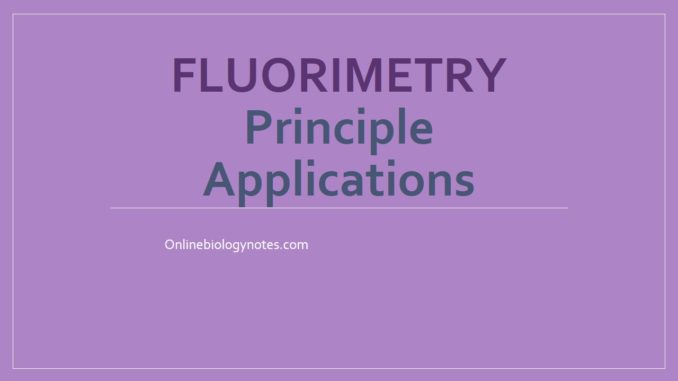
Introduction:
- A large number of substances are unknown which can absorb ultraviolet or visible light energy.
- But these substances lose excess energy through heat through collisions with neighboring atoms or molecules.
- However, a number of essential substances are also known which lose only part of this excess energy in the form of heat and release the remnant energy as electromagnetic radiation of a wavelength longer than that absorbed.
- The process of emitting radiation is collectively known as luminescence.
- In luminescence, light is produced at low temperatures.
- Thus, the light emitted by this process is regarded as ‘light without heat’ or ‘cold light’.
- Luminescence is of 2 types:
- i. Fluorescence:
- When a beam of light is incident on certain materials, they emit visible light or radiations.
- This phenomenon is known as fluorescence and the substance showing this phenomenon is known as fluorescent substances.
- The phenomenon of fluorescence is instantaneous and starts immediately after the absorption of light and stops as soon as the incident light is cut off.
- ii. Phosphorescence:
- When light radiation is incident on certain materials, they continue to emit light even after the incident light is cut off.
- This type of delayed fluorescence is called phosphorescence and the substances are called phosphorescent substances.
- A material exhibiting fluorescence generally re-emits excess radiation within 10-6 to 10-4 seconds of absorption.
- On the other hand, materials exhibiting phosphorescence re-emit excess radiation within 10-4 to 20 seconds or longer.
Principle of Fluorimetry:
- When molecules are irradiated with light of the appropriate frequency, it will be absorbed in about 10-15 seconds.
- In the process of absorption, the molecules may move from ground to the first excited singlet electronic state.
- Although at room temperature molecules may be present in their ground vibration level.
- After absorption, the excitation molecules can end up in any one of the vibrational levels in the first excited electronic state.
- From the excited singlet state, one of the following three phenomena will probably occur, depending on the molecule involved and the conditions:
- The first possibility is that the excited singlet state is relatively unstable, in such a situation, the excited molecules will return to the ground state by collisional deactivation without emitting any radiation.
- The second possibility is that the molecules in the excited singlet state may emit an ultraviolet or visible light photon. This process is known as fluorescence.
- The third possibility is that the molecule with a relatively stable excited state may undergo transition and sometime thereafter returns to the ground state, usually by the emission of an ultraviolet or visible light photon. This is known as phosphorescence emission.
- The instruments used for the measurement of fluorescence are known as fluorimeters.
- In these, filters are used to isolate the wavelength of excitation.
- Thus, a fluorimeter is a manual instrument and is best used for measurements at one or two wavelengths because a change in filters is to be made each time the wavelength is changed.
- A fluorimeter employs a mercury vapor lamp, a condensing lens, a primary filter, a sample container, a secondary filter, and a receiving photocell.
- Generally, the primary filter is used to select ultraviolet but not visible radiation whereas the secondary filter is used to transmit visible fluorescent radiation and to absorb incident ultraviolet radiation.
- The light from the mercury vapor lamp is allowed to pass through the condensing lens followed by its passage through a primary filter.
- The primary filter selects only UV radiation but absorbs visible radiation.
- The UV radiation from the primary filter is passed through a sample container.
- From the sample, UV and fluorescent radiations are obtained which are passed through a secondary filter that absorbs the primary radiant energy but transmits the fluorescent radiation.
- This is received by a photocell placed in a position at right angles to the incident beam.
- The output of the photocell is measured by a sensitive galvanometer or another device.
Applications of Fluorimetry:
- Determination of uranium in salts used extensively in the field of nuclear research.
- Estimation of traces of boron in steel by means of the complex formed with benzene.
- Estimation of calcium by fluorimetry with a calcium solution.
- Determination of Vitamin B (B1 thiamine and B2 riboflavin) in the food samples like meat, cereals, etc.
- Fluorimetry is employed to carry out both qualitative and quantitative analyses for various aromatic compounds present in cigarette smoke, air-pollutant, concentrates, and automobiles exhaust.
